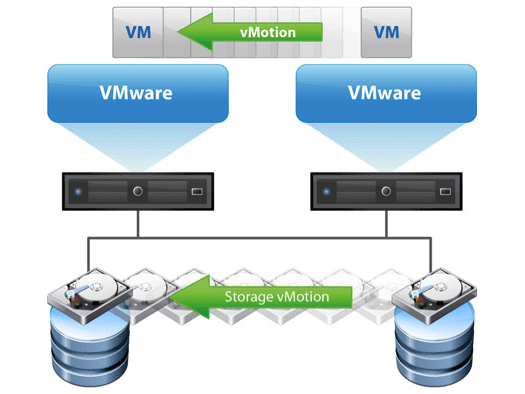What is Storage vMotion in VMware?
In short, it can be said that Storage vMotion is one of the main components in VMware vSphere, which allows us to move a virtual machine from one server to another. This transfer happens by maintaining the integrity and without changing the existing data. Storage vMotion is available in Standard, Enterprise Plus and Platinum editions. It also requires vCenter to do this.

The Storage vMotion feature is combined with the vSphere vMotion feature, which combines the two together to allow a virtual machine to be moved from one physical server to another. The two vMotion processes mentioned ensure that a virtual machine can be moved without any risk to performance or data.
How does a Storage vMotion work?
The start of work and how Storage vMotion works is by starting the process of copying Metadata information related to the virtual machine to another Storage. After doing this, using the CBT function, which stands for Changed Block Tracking, it moves the files related to the virtual machine disk, i.e. VMDK, to a new location. After all the transfer steps are successful, the source virtual machine is placed in the Suspend state and the new location of the disks is introduced to it. Before changing the machine to Resume mode, the ESXi host checks the status of the files once again and then deletes the files in the folder related to the virtual machine.
All the steps are imperceptible for users and they do not notice this process, although it may affect the transfer speed and efficiency depending on the network conditions and the amount of bandwidth, as well as the size of the virtual disk (VMDK). It should be noted that a Storage vMotion structure requires significant network resources, which can have an impact on other virtual machines that use the same resources.
What are the uses of Storage vMotion?
Storage vMotion functionality and structure can be used for various purposes, for example as a transfer tool when we need to move the disks of a virtual machine from a SAN to another location. As a load balancer to ensure that the virtual machine has the highest efficiency in its performance. Even in times when we may switch our SAN to Down mode for maintenance and repairs and we do not intend to interrupt the service of the virtual machine, Storage vMotion can help us.
You should note that the combination of vMotion and Storage vMotion structures in vSphere always provides us with high flexibility in keeping the virtual machine active and available. As you can see from the explanation above, it allows us to have a load balance and a great HA and prevent services from being unavailable
